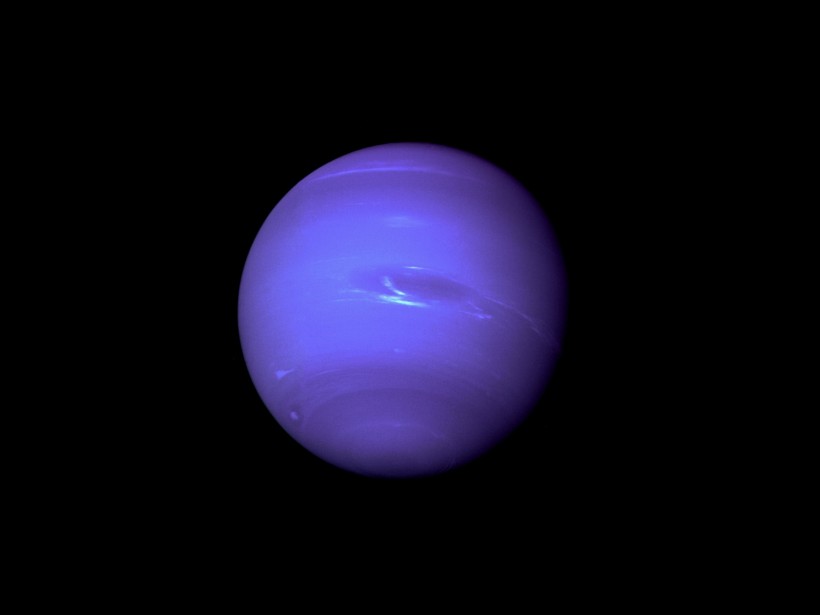New research has found that the asteroids near Neptune are all some shade of red, unlike the planet itself which is famously blue. An international team of researchers investigated Neptune's Trojan asteroids and found they are far redder than other asteroids in the Solar System.
This indicates the existence of two different populations of asteroids in the region. The findings of the study, titled "Keck, Gemini, and Palomar 200-Inch Visible Photometry of Red and Very-red Neptunian Trojans," were published in the Monthly Notices of the Royal Astronomical Society: Letters.

Neptune as seen from Voyager 2 from 4.4 million miles
About Neptune's Trojan Asteroids
The scientists increased the number of known Neptune's Trojan asteroids, also known as Neptunian Trojans, from around a dozen to 18, Science Daily reported. These asteroids, measuring between 50 and 100 kilometers, circle the Sun at around 4.5 billion kilometers away and are located in the gravitationally stable points between Neptune and the Sun, or between Neptune and the dwarf planet Pluto.
The Neptunian Trojans is essentially a cloud of asteroids whose orbit is parallel to that of Neptune. First discovered in 2001, there are fewer than 50 of these asteroids have been identified to date.
Despite their apparent abundance, it has been challenging to locate these asteroids as they are so small and relatively far from our planet. The research used data from four different telescopes to investigate the makeup of these asteroids.
The team led by Bryce Bolin from NASA's Goddard Space Flight Center analyzed the color of the 18 Neptunian Trojans under investigation. They found that most of the asteroids were redder than other asteroids, with four being extremely red.
Bolin said in a statement that the data collected from the different telescopes was conducted over two years and doubled the sample of large Teptunian Trojans studied previously.
The new study adds to the biological understanding of asteroids and their characteristics. With the planets and the asteroids in the Solar System being so numerous and diverse, it is important to have a comprehensive understanding of their properties for both research and protection purposes.
READ ALSO: Scientists Explain Why Ice Giants Uranus and Neptune Have Different Shades of Blue
Why Are Neptune's Trojan Asteroids Red?
According to Live Science, the red color of the Neptunian Trojans signifies their abundant volatile compounds, particularly ammonia and methanol. These compounds easily transform to gas when exposed to solar radiation, and so asteroids closer to the Sun tend to have less red tinge due to the volatile components boiling away.
Astronomers have noticed a gradual shift towards darker red-colored asteroids beyond Pluto's orbit. Asteroids in the inner Solar System tend to be gray while those beyond Pluto's orbit are dark red.
Researchers believe that it indicates that Neptune's red asteroids probably developed beyond the Sun before migrating towards Neptune's orbit. The study of these asteroids can provide insights into how early asteroids formed and how their composition has evolved.
RELATED ARTICLE: 1,800 Feet-Wide Trojan Asteroid Trapped in the Same Orbit As Earth for 4000 Years is Great for Future Flyby Missions, Astronomers Suggest
Check out more news and information on Neptune in Science Times.














